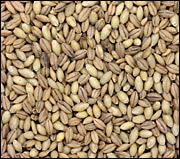People today want convenience, whether it be from their bank, credit card, favorite retail store, or restaurant. They demand it from the companies who hold their loyalty, including their health care providers (you). They don’t want to call and possibly be put on hold, and they want to use an app or schedule an appointment on your website. Here are three reasons your practice can gain by switching to online appointment scheduling.
Vitamins, Minerals and Dietary Supplements
Fiber (Soluble)
What is soluble fiber? Why do we need it?
Fiber is divided into two general categories - water soluble and water insoluble. This article will discuss soluble fiber. Information on insoluble fiber can be found elsewhere on this site.
Soluble fibers are those that dissolve in water or swell when placed in water. They are found in various types plants and gums, along with some cereals, jams and jellies.
One the main properties of soluble fiber is its ability to lower cholesterol. Dozens of studies have shown that soluble fiber lowers cholesterol, but the level of reduction can vary depending on the type of fiber. Soluble fiber can also lower blood sugar levels in people by slowing the absorption of glucose from the small intestine. This decreases the body's need for insulin, and may be of aid to people with diabetes.
 Another function of soluble fiber is to help promote weight loss. Because fiber creates a feeling of satiation in the stomach, it is believed to help decrease appetite, leading to weight loss. However, a definitive link between soluble fiber intake and weight loss has yet to be established.
Another function of soluble fiber is to help promote weight loss. Because fiber creates a feeling of satiation in the stomach, it is believed to help decrease appetite, leading to weight loss. However, a definitive link between soluble fiber intake and weight loss has yet to be established.
How much soluble fiber should I take?
High amounts of soluble fiber can help decrease blood cholesterol. The amount of fiber to be consumed depends on the food from which it is derived. For oat bran, for example, some practitioners may recommend between 80 and 100 grams per day, which translates into about three-quarters of a cup of uncooked oats. For beans, approximately 1.5 cups (150 grams) will provide enough fiber to help lower cholesterol levels.
What forms of soluble fiber are available?
Soluble fiber is abundant in foods such as oats, barley, beans, whole fruits, and psyllium. Soluble fiber is also available as a supplement in powder, pill and capsule form.
What can happen if I take too much soluble fiber? Are there any interactions I should be aware of? What precautions should I take?
Some people may be allergic to foods that are high in fiber; these foods should be avoided. In addition, some foods such as beans contain sugars that are not easily digested, which can lead to flatulence and bloating. Fiber may also reduce the absorption of some minerals, such as calcium and magnesium. People who do not get enough calcium in their diet should consult with a licensed health care provider before taking large amounts of fiber. In addition, people with scleroderma should speak with a health care provider before taking fiber supplements or engaging in a high-fiber diet. Generally, however, high-fiber diets are more likely to improve a person's health, rather than cause any health problems.
Certain medications, such as Lovastatin, Verapamil and Propoxyphene may interact with fiber supplements. As always, make sure to consult with a licensed health care provider before taking soluble fiber or any other herbal remedy or dietary supplement.
References
- Brown L, Rosner B, Willett WW, Sacks FM. Cholesterol-lowering effects of dietary fiber: a meta-analysis. Am J Clin Nutr 1999;69:30-42.
- Gough A, Sheeran T, Bacon P, et al. Dietary advice in systemic sclerosis: the dangers of a high fibre diet. Ann Rheum Dis 1998;57:641-2.
- Jenkins DJA, Kendall CWC, Ransom TPP. Dietary fiber, the evolution of the human diet and coronary heart disease. Nutr Res 1998;18:633-52.
- Nuttall FW. Dietary fiber in the management of diabetes. Diabetes 1993;42:503-8.
- Salmeron J, Manson JAE, Stampfer MJ, et al. Dietary fiber, glycemic load, and risk of non-insulin-dependent diabetes mellitus in women. JAMA 1997;277:472-7.


